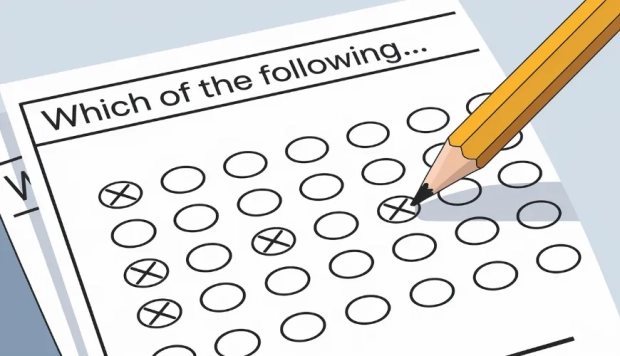Return on sale (ROS)

What is Return On Sale (ROS)?
Return on Sales (ROS) is like a health check for a business. It shows how well a company turns its sales into profits. Imagine you have a lemonade stand. After selling lemonade for a day, you count how much money you made. Then, you subtract how much you spent on lemons and sugar. The money left over, compared to how much you made from selling, is your ROS. It's a way to see if you're doing a good job of keeping costs down and making money from your sales.
How to Figure Out Your ROS
Calculating Return on Sales (ROS) is quite straightforward. Here's a simple step-by-step guide to help you understand how it's done:
-
Find Your Net Income: Net income is the profit a company makes after all expenses, taxes, and costs have been subtracted from total revenue. It's basically what the company earns after paying everything it needs to keep running.
-
Check Your Total Sales: Total sales or revenue is the total amount of money earned from selling goods or services before any expenses are subtracted.
-
Divide Net Income by Total Sales: Take your net income and divide it by your total sales. This will give you a decimal number.
-
Convert to Percentage: To make it easier to understand, multiply the decimal by 100. This converts it into a percentage, which is your ROS.
Here's a simple example to illustrate:
- Let's say your business made $50,000 in sales last month.
- After paying for costs like materials, salaries, and other expenses, your net income was $5,000.
- To find your ROS, divide $5,000 (net income) by $50,000 (total sales). This gives you 0.1.
- Multiply 0.1 by 100 to get your ROS, which is 10%.
So, your ROS would be 10%, meaning for every dollar you made in sales, you earned 10 cents in profit. It's a quick way to see how efficiently you're turning sales into profits.
EOM or End of Month meaning explained
Making Sense of Your ROS
Understanding your ROS is crucial. A high ROS means you're doing a great job of turning sales into profits. A low ROS might mean your costs are too high, or you're not charging enough for your products. It's like checking your lemonade stand; if your ROS is low, maybe you're spending too much on fancy lemons or not selling your lemonade at a good price. It's essential to compare your ROS with other businesses like yours to see if you're on track.
Analyzing Return on Sales (ROS) helps you understand how efficiently your business is turning sales into profits. Here are some steps to help you analyze ROS effectively:
1. Compare Over Time
Look at how your ROS changes over time. Is it going up, staying steady, or going down? An increasing ROS suggests you're getting better at converting sales into profits, perhaps by reducing costs or increasing prices without losing customers. A decreasing ROS could indicate rising costs or falling prices, which might need action.
2. Industry Benchmarking
Compare your ROS with other businesses in your industry. Different industries have different average ROS levels. For instance, a software company might naturally have a higher ROS than a grocery store because it has lower costs of goods sold. Knowing where you stand compared to your peers can tell you if you're leading the pack or need to catch up.
3. Segment Analysis
Break down your ROS by product lines or business segments if your business is diversified. This can show you which parts of your business are most and least profitable. Maybe your lemonade sales have a higher ROS compared to your iced tea. This insight can guide where to focus your efforts and resources for maximum profit.
4. Factor in Economic Conditions
Economic conditions can affect your ROS. In a booming economy, your ROS might rise as consumers are willing to spend more. In a downturn, you might see it fall. Adjust your strategies accordingly; for example, by finding ways to reduce costs during tough times to maintain your ROS.
5. Set Targets
Based on your analysis, set realistic ROS targets for the future. These targets can motivate and guide your team to improve efficiency, control costs, and drive sales growth.
6. Actionable Insights
Use your ROS analysis to make informed decisions. If your ROS is lower than you'd like, consider strategies like raising prices, finding cheaper suppliers, or cutting unnecessary expenses. If your ROS is high, you might look into investing in growth or improving product quality to sustain your success.
Remember, ROS is just one tool in your toolbox. It's important to use it alongside other financial metrics to get a complete picture of your business's health.
What's a Good ROS?
A "good" ROS varies by industry. For example, a high-end jewelry store might have a higher ROS than a grocery store because it has higher markups on its products. There's no one-size-fits-all number, but generally, a higher ROS is better. It means you're able to turn a good portion of your sales into actual profit, which is the goal of any business.
ROS in Action: Examples and Comparisons
Using ROS can help in many ways. It can guide decisions on pricing, cost-cutting, or figuring out which products are most profitable. For example, if one type of lemonade sells better and has a higher ROS, you might focus on selling more of that. ROS is different from ROI (Return on Investment), which measures the return on money invested in the business, and ROE (Return on Equity), which looks at the return on the money shareholders have put into the company. It's also different from operating margin, which considers operating income (income from core business activities) rather than net income, including all other sources of income and expenses. Understanding these differences helps business owners use the right tool for the right job.




